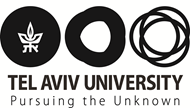Mass-Spectrometry Laboratory - How to present a sample
General Instructions
-
The material to be examined should be put in a stoppered glass vessel which is labeled by the identity of the material, e.g. AB1234.
-
The amount of material required is about 1mg, not including solvent, or a 1mg/mL solution.
-
Download a submission form in Word format or a submission form in PDF format and fill in all known details of the sample.
-
The form can be filled out by hand or typed.
-
The labeled sample can be attached to the submission form by transparent adhesive tape or put in an envelope together with the submission form.
-
The form and sample should be submitted to the mass-spectrometry laboratory in the School of Chemistry, Shenkar Building, room 103.
-
If the laboratory is closed, the sample may be placed in a container near the door that is marked for this purpose.
-
If the sample must be maintained at low temperature or if the analysis is urgent, arrangement should be made in advance.
-
When the analysis has been carried out, you will be informed, or the results will be sent to you, or they will be left in the container marked “Results” outside the laboratory.
Instructions for filling out the form
-
The labeling of the sample and the name of the applicant should be written in numbers and Latin letters only, with no special symbols of other languages.
-
The sample must be labeled, even by an arbitrary name or single digit.
-
The labeling of the sample on the submission form and on the container must be identical.
-
Indicate if the sample is sensitive to heat/light/humidity and how to protect it.
-
Indicate if the material is poisonous, explosive, suspected of being carcinogenic, or hazardous for any other reason. It should also be noted if the sample has a bad odor or is a lachrymator.
-
Materials of biological, and especially human, origin (for example, tissue concentrate) should be marked: “Biohazard”.
-
Please use a uniform submission form and list all known details. This information is essential in order to avoid errors and to carry out a successful analysis.
-
The approximate weight of the material should be indicated (20% accuracy is sufficient).
-
Solubility: indicate possible solvents – water, methanol, acetonitrile, dichloromethane. If none of these is possible, indicate a possible solvent.
-
Degree of purity: does the sample contain other substances?
-
Indicate the structural formula, empirical formula and molecular weight (accuracy to one mass unit is sufficient). If these are not known, indicate the type of material and an estimate of its molecular weight (for example, “natural substance 500-800”).
-
Users of graphic-drawing programs can attach the structural formula, empirical formula and molecular weight in the column of the submission form reserved for a drawing of the substance, provided it does not deviate from the limits of the column. Alternatively, a separate page containing the structural formula and the details can be attached.
-
Do not mark anything in the lower part of the form. This section is reserved for the use of the laboratory.
-
The information requested:
-
For your convenience, it is possible to indicate the type of analysis desired, according to the following list:
MS – a standard analysis will be carried out to obtain the nominal molecular weight.
MS/MS – a mass analysis for the requested precursor will be carried out.
Acc. Mass – an analysis of high accuracy will be carried out to verify the empirical formula which has been submitted. This requires the preliminary submission of a standard MS analysis, possibly independently by TQD or any other instrument. -
There is no need to specify the suitable method of ionization or the polarity. We will choose the suitable method. If it is important for you that the analysis be carried out by a certain method, this should be clearly indicated.
-
It is possible to indicate a number of analyses on the same sample, e.g. MS and Acc.Mass.
-
It is possible and even desirable to add a previous spectrum or any additional information at your discretion.
-
If you wish to receive the results as e-mail in PDF form, this should be explicitly indicated.
-

